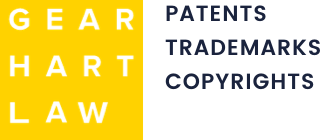Patent appeals can feel like distant courtroom dramas, especially when the names involved are Apple or Microsoft. But behind the headlines are valuable lessons for anyone trying to protect an invention. Whether you’re just starting the patent process or thinking about defending your rights, you can learn a lot from how these high-stakes cases played out. At Gearhart Law, we help inventors, startups, and business owners avoid the pitfalls we’ve seen in these well-known appeals.
Apple vs. Samsung – The Power of Clarity
Apple and Samsung spent years battling over smartphone patents. At the heart of the case were Apple’s design and utility patents covering things like the shape of the iPhone and the user interface. Apple won some significant victories, thanks in large part to how clear and specific its patent applications were.
One of the biggest lessons from this case? Clear drafting wins. Apple’s design patents had strong visual representations, and their utility patents used tight, consistent language. That made it easier to convince a jury that Samsung had copied protected features.
What you can take away:
- Make your drawings as detailed and precise as possible.
- Keep your claims consistent with the supporting description.
- Avoid vague or overly broad wording—it can backfire later.
When we work with clients on patent applications, we focus on clarity. Not because you’re headed to court but because strong drafting helps protect your ideas from being easily copied or challenged.
Myriad Genetics – Know What You Can Patent
The case of Association for Molecular Pathology v. Myriad Genetics was a turning point in biotech patents. Myriad had isolated certain genes linked to breast cancer and obtained patents on those sequences. However, opponents argued that human genes shouldn’t be patentable.
The Supreme Court agreed, saying that naturally occurring DNA—even if isolated in a lab—can’t be patented. However, synthetic DNA (known as cDNA) can be patented because it doesn’t exist in nature.
The takeaway here is that not everything that’s valuable is eligible for patent protection. Just because something is difficult to develop doesn’t mean it meets the standards for a patent. If you’re in biotech, software, or AI, the boundaries around patent eligibility are especially important. We’ll help you figure out early on whether your invention falls within those boundaries so you don’t waste time or resources chasing a patent that won’t hold up.
Microsoft v. i4i – Strong Patents Are Hard to Break
In Microsoft v. i4i, a small Canadian company claimed Microsoft Word infringed on its XML editing patent. Microsoft tried to invalidate the patent, arguing that i4i’s idea was already in use before they filed.
The Supreme Court rejected Microsoft’s challenge. The court confirmed that patents are presumed valid and can only be invalidated with “clear and convincing” evidence. Microsoft couldn’t meet that standard—and ended up paying over $200 million.
This case is a reminder of two things:
- A strong patent can hold up against even the biggest companies.
- Trying to attack a granted patent isn’t easy, especially without thorough evidence.
If you’re preparing to file a patent, take the time to get it right. A well-documented and well-drafted application doesn’t just protect your work—it can also hold up under scrutiny if you’re ever challenged.
What These Cases Can Teach Patent Applicants
You don’t need to be a tech giant to apply these lessons to your own patent strategy. Whether you’re building a product in your garage or scaling a new startup, here’s what we suggest:
- Draft every claim and drawing with clarity and consistency.
- Know what types of inventions are patentable—and what aren’t.
- Keep records of development timelines and prior art searches.
- Work with a law firm that treats your ideas with care from day one.
Patent appeals may seem far removed from your day-to-day life, but they offer clear insights into what makes a strong patent—and what can go wrong if the foundation isn’t solid.
Putting These Lessons to Work
You don’t need to be in court to benefit from what these companies went through. We’ll help you apply these lessons early before problems arise. At Gearhart Law, we work with inventors, entrepreneurs, and small businesses across New Jersey and beyond to draft and protect patents that stand the test of time. Contact us today to get started.

